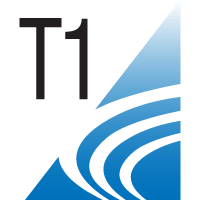Adult Diagnostic (AD)
LM208 - Lessons Learned from an Intraoperative Monitoring Audiologist
Thursday, April 20, 2023
2:30 PM - 3:30 PM PDT
Location: Tahoma 5 ** 800 Pike
Earn 0.1 CEUs
.jpg)
Lindsay Koehler, AuD (she/her/hers)
Clinical Audiologist
University of Michigan Health
Ann Arbor, MichiganDisclosure(s): No financial relationships to disclose
Lead Presenter(s)
Abstract:
This presentation builds upon the audiologist’s anatomic knowledge by exploring the ear from an intraoperative perspective. Intraoperative monitoring is a unique specialty where the monitoring audiologist has a seat in the operating room (OR), observing the procedure and its effect on ear structures and cranial nerves. The presenter takes attendees inside the OR through case presentations and photos of otologic procedures with an emphasis on tympanomastoidectomy. As we explore lessons learned from the OR, we can integrate this knowledge with our clinical practice to better serve our patients.
Summary:
The presenter will begin by introducing self and experience in the field of intraoperative monitoring (IOM) with an emphasis on what IOM is and what an IOM audiologist does. A neurotologist will serve as a contributor for the presentation.
First, the presenter will introduce a case study including an audiogram with conductive or mixed hearing loss and cholesteatoma. Presentation will initially follow the patient, including what the otologist is looking for in clinic, interesting facts, relevant imaging, surgical recommendation, and reasoning behind the surgical recommendation.
Presenter will take audience “inside the OR” through photos to explore the anatomy, highlighting canal wall up tympanomastoiectomy surgical steps, review of relevant structures, goals of surgery, risks of surgery (including facial nerve damage & relevant monitoring), and discussion of hearing reconstruction. Will discuss difference between canal wall up versus canal wall down using anatomic photos/videos.
Discuss why post-operative hearing outcomes after cholesteatoma removal are sometimes worse compared to pre-operative. Review tympanometry and when/why it is safe to perform following a procedure or in patients with abnormal anatomy. Highlight the post-operative otology visit, including what the physician is viewing in the ear and canal wall down anatomy. Review potential candidacy for hearing aids, bone-conduction technology, and cochlear implant in these surgical patients and how this may impact our counseling. Will touch upon “blow by” with ear impressions in a canal wall down cavity and what is happening behind the otoblock.
Time pending, presenter will briefly highlight interesting ear disorders from an intraoperative perspective, including ear canal cholesteatoma, encephalocele, and inflammatory disease in the mastoid.
Questions.
This presentation builds upon the audiologist’s anatomic knowledge by exploring the ear from an intraoperative perspective. Intraoperative monitoring is a unique specialty where the monitoring audiologist has a seat in the operating room (OR), observing the procedure and its effect on ear structures and cranial nerves. The presenter takes attendees inside the OR through case presentations and photos of otologic procedures with an emphasis on tympanomastoidectomy. As we explore lessons learned from the OR, we can integrate this knowledge with our clinical practice to better serve our patients.
Summary:
The presenter will begin by introducing self and experience in the field of intraoperative monitoring (IOM) with an emphasis on what IOM is and what an IOM audiologist does. A neurotologist will serve as a contributor for the presentation.
First, the presenter will introduce a case study including an audiogram with conductive or mixed hearing loss and cholesteatoma. Presentation will initially follow the patient, including what the otologist is looking for in clinic, interesting facts, relevant imaging, surgical recommendation, and reasoning behind the surgical recommendation.
Presenter will take audience “inside the OR” through photos to explore the anatomy, highlighting canal wall up tympanomastoiectomy surgical steps, review of relevant structures, goals of surgery, risks of surgery (including facial nerve damage & relevant monitoring), and discussion of hearing reconstruction. Will discuss difference between canal wall up versus canal wall down using anatomic photos/videos.
Discuss why post-operative hearing outcomes after cholesteatoma removal are sometimes worse compared to pre-operative. Review tympanometry and when/why it is safe to perform following a procedure or in patients with abnormal anatomy. Highlight the post-operative otology visit, including what the physician is viewing in the ear and canal wall down anatomy. Review potential candidacy for hearing aids, bone-conduction technology, and cochlear implant in these surgical patients and how this may impact our counseling. Will touch upon “blow by” with ear impressions in a canal wall down cavity and what is happening behind the otoblock.
Time pending, presenter will briefly highlight interesting ear disorders from an intraoperative perspective, including ear canal cholesteatoma, encephalocele, and inflammatory disease in the mastoid.
Questions.
Learning Objectives:
- Describe the anatomic difference between canal wall up versus canal wall down tympanomastoidectomy.
- State what an intraoperative monitoring audiologist may monitor during a tympanomastoidectomy.
- Describe when tympanometry may be safely performed post-operatively and the physiologic reasoning behind this.

